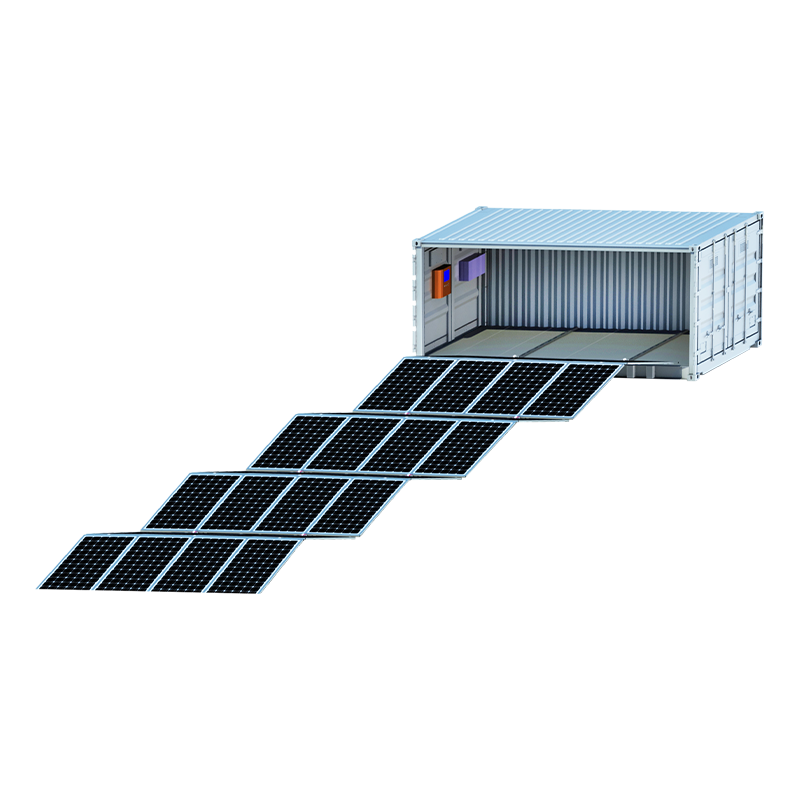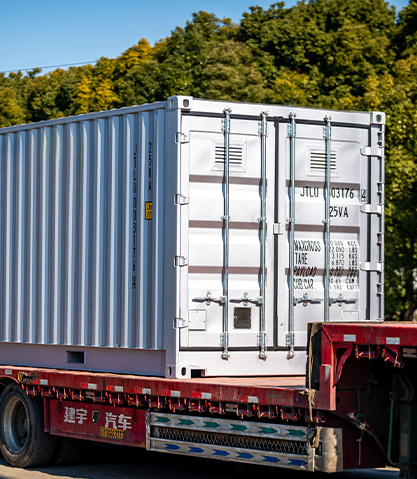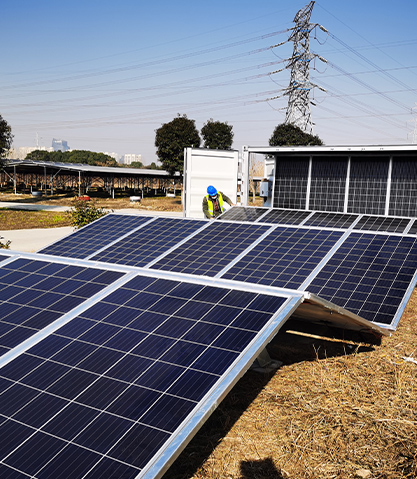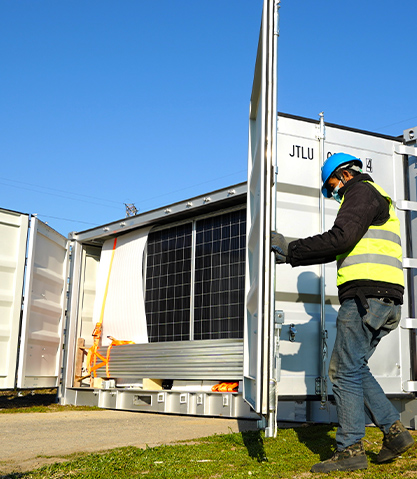As the global energy transition accelerates, modular and mobile renewable energy solutions are gaining significant attention. Among them, Solar Power Containers have emerged as a practical, scalable, and cost-effective answer to the growing demand for decentralized, clean electricity—especially in remote areas, disaster relief scenarios, and temporary industrial or construction operations. This article explores the technical foundation, engineering design, application scope, and broader implications of solar power containers in modern energy systems.
1. Concept and Structure of Solar Power Containers
A Solar Power Container is a self-contained photovoltaic power generation unit housed within a standard ISO container, typically 20-foot or 40-foot in size. The container integrates all necessary components for off-grid or grid-tied solar power generation, including solar panels, inverters, charge controllers, battery storage systems (often lithium-ion or LFP), mounting structures, and ancillary electrical equipment. The system is engineered for rapid deployment and minimal civil infrastructure, making it ideal for temporary or mobile energy applications.
Key engineering features include:
-
Foldable or sliding solar arrays that expand beyond the container's footprint.
-
Integrated energy management systems (EMS) to optimize power generation, load distribution, and storage utilization.
-
Hybrid integration options allowing combination with diesel generators, wind turbines, or existing grid connections.
2. Design and Material Considerations
The structural design of solar power containers emphasizes durability, weather resistance, and thermal management. Containers are often insulated and equipped with ventilation or active cooling systems to maintain optimal performance in extreme climates. The solar arrays are mounted on motorized or manual retractable frames, designed to withstand wind loads and facilitate transportation.
Battery enclosures are engineered with fire suppression systems, BMS (Battery Management Systems), and thermal insulation. The electrical systems conform to international standards such as IEC, UL, or CE to ensure safety and interoperability across diverse regions.

3. Deployment Scenarios and Use Cases
Solar power containers have demonstrated substantial value across a wide range of applications:
-
Disaster Relief and Humanitarian Aid: In post-disaster zones where grid infrastructure is damaged, solar containers offer immediate electricity for hospitals, shelters, and communication systems.
-
Remote Industrial Operations: Mining sites, oil exploration bases, and military outposts often operate in areas where grid access is infeasible. A solar container ensures continuous, renewable power with lower fuel logistics.
-
Rural Electrification: In developing countries, solar containers are deployed as microgrids to electrify off-grid villages, enabling local schools, clinics, and businesses to function reliably.
-
Event and Construction Sites: Temporary venues and construction projects benefit from the plug-and-play nature of these systems, reducing the need for diesel generators and lowering emissions.
4. Technical Challenges and Innovations
Despite their advantages, solar power containers face several engineering and operational challenges:
-
Energy Yield Limitations: The area available for solar panel installation is limited, so maximizing output through bifacial modules, tracking systems, or high-efficiency cells is crucial.
-
Battery Lifecycle Management: Ensuring long battery life in harsh conditions requires advanced BMS, effective cooling, and modular battery replacement options.
-
Transportation and Installation Logistics: The weight of integrated systems, especially large battery packs, can impact mobility and transport cost. Some manufacturers now offer partially modular designs to split components for easier shipment.
Recent innovations are addressing these issues through AI-based energy optimization algorithms, IoT-based remote monitoring platforms, and next-generation battery chemistries (e.g., sodium-ion and solid-state batteries).
5. Environmental and Economic Impact
From an environmental perspective, solar power containers reduce reliance on fossil fuels, lower greenhouse gas emissions, and support sustainable development goals (SDGs), particularly SDG 7 (Affordable and Clean Energy) and SDG 13 (Climate Action). Lifecycle assessments show that, compared to diesel generators, containers offer significant reductions in both operational cost and carbon footprint over a 10-year horizon.
Economically, their modularity and reusability offer long-term cost savings. Once deployed at a site, the same container can later be redeployed elsewhere, amortizing the capital investment over multiple projects. In humanitarian contexts, this reusability significantly enhances cost-efficiency for aid agencies and NGOs.
6. Outlook and Market Dynamics
The global market for containerized solar solutions is expanding, driven by both public and private sector investment. Government tenders for rural electrification, rising demand for off-grid construction power, and strategic interest from defense sectors are contributing to growth. Meanwhile, manufacturers are beginning to offer leasing models, further lowering the entry barrier for end-users.
In the future, the convergence of containerized solar with smart grid technologies, modular hydrogen storage, and AI-driven maintenance is expected to unlock new levels of performance and flexibility.
Solar power containers are not merely a niche product but a transformative solution for distributed power generation. Their engineering versatility, environmental value, and operational practicality position them as a vital component of future energy systems—particularly in a world increasingly shaped by mobility, resilience, and sustainability. As the technology matures and integration standards evolve, solar power containers are poised to play a defining role in global electrification strategies.

 English
English 中文简体
中文简体 عربى
عربى



